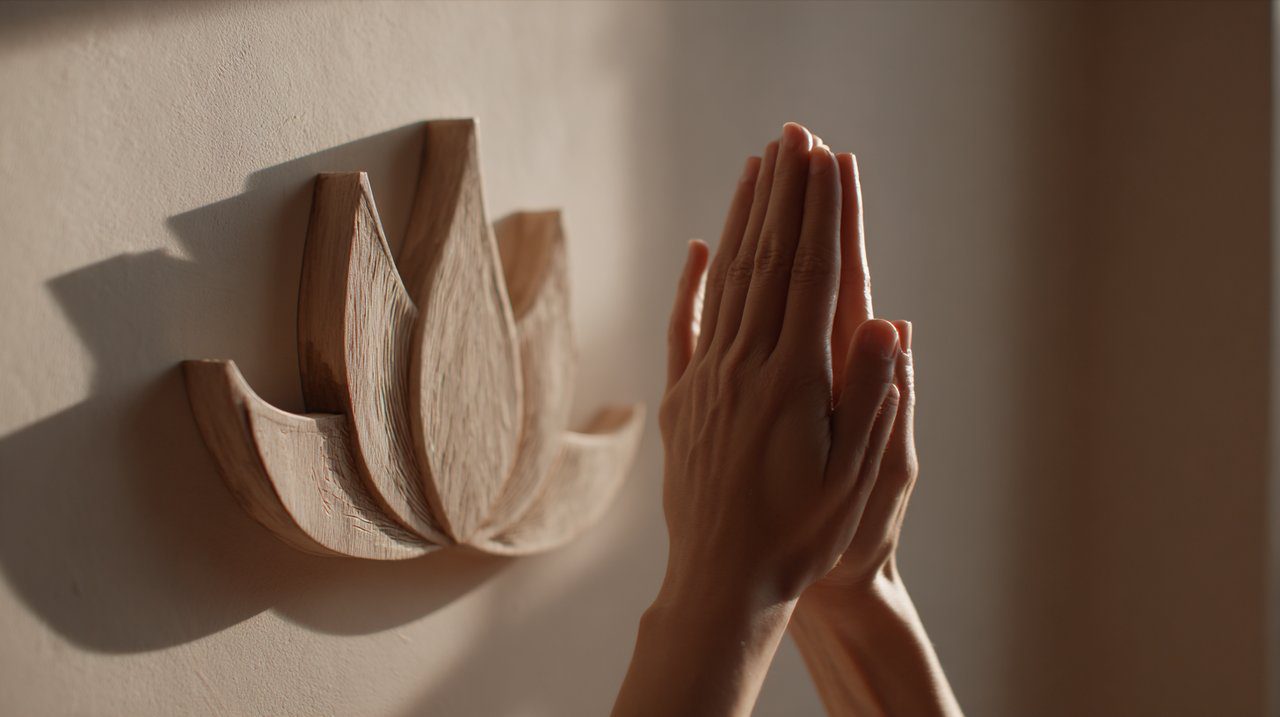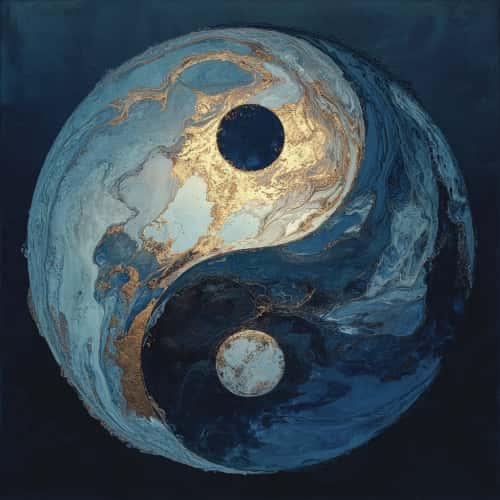The Ultimate Guide to Namaste Signs: Meanings, Placement & Decor Ideas
Our homes do more than just house our belongings; they’re dynamic environments that constantly shape our thoughts, feelings, and how we interact with the world. We instinctively want our spaces to mean something more, to be places that truly nourish us, not just look good.
This is where something like a Namaste sign can come in. It’s not just a decoration; it’s a powerful tool for cultivating harmony and positive intention. We’ll explore how these ancient symbols, understood through a modern lens of environmental psychology, can become active prompts for mindful living in your space.
Understanding Namaste: More Than Just a Greeting
At its core, Namaste is far more than a casual greeting. It’s a powerful way of acknowledging our shared humanity and recognizing the inner worth in every person. The Sanskrit word translates to "I bow to you," with "namah" meaning "bow" and "te" meaning "to you."
This humble gesture, often paired with the Anjali mudra (palms pressed together at the heart, with a slight bow of the head), symbolizes deep respect and humility. From an environmental psychology perspective, a Namaste sign in your space acts as a constant, silent affirmation of this core principle.

It serves as a visual anchor, gently reminding you and anyone entering your space of the inherent worth and interconnectedness of all beings. The gesture itself, bringing the hands together, beautifully represents the unification of opposites and the harmony between mind and body. It’s a non-verbal cue that encourages us to set aside ego and recognize the essential goodness within.
This ancient practice, rooted in Hindu, Buddhist, and Jain traditions, has truly transcended its origins to become a universal symbol of peace and mutual respect.
“The most powerful form of connection you can ever offer is not a firm grip or a quick wave. It is the simple, humble, ancient decision to see the soul, not the surface.”
Strategic Placement: How Your Namaste Sign Influences Your Space
The impact of a Namaste sign is amplified not just by its inherent meaning, but by its thoughtful placement within your environment. This isn’t about superstition; it’s about leveraging environmental psychology and spatial awareness to create desired psychological effects.
Just as a well-placed piece of art can draw the eye and evoke emotion, a Namaste sign can subtly guide the mental and emotional flow of a room. Consider placing your sign in areas where interaction or reflection is common.
For instance, near your entryway, it becomes a welcoming signal, setting a tone of respect and mindfulness for everyone who enters—including yourself. In a shared living space, a sign placed where it’s easily visible during conversation can subconsciously encourage more respectful and compassionate dialogue.
When applying feng shui principles, the goal is to optimize the flow of positive energy, or "chi." Placing a Namaste sign in a "command position"—where it can be seen from the room’s entrance without being directly in line with the door—can strengthen its message. This creates a sense of control and preparedness, rather than just being another item on the wall.
It’s also wise to avoid placing it in cluttered areas, as feng shui emphasizes clear pathways for energy to flow freely. A strategic location ensures the symbol acts as a subtle, positive prompt, continually shaping your experience of the space.
Integrating Your Namaste Sign: Creative Ideas for a Serene Space
Integrating Namaste signs into your decor offers a wonderful opportunity to infuse your space with tranquility and positive intention. Beyond simply hanging a plaque, think about how the sign can become part of a larger, harmonious arrangement that speaks to your senses and promotes overall well-being.
One effective approach is to create a dedicated "mindful corner." Here, your Namaste sign can be the focal point, surrounded by elements that enhance calm. For example, you might pair it with lotus flower decor.
The lotus flower symbolizes purity, resilience, and spiritual awakening, often rising beautifully from muddy waters. A small, elegant lotus flower decor piece or artwork can visually reinforce these themes of growth and enlightenment.
To further enhance this space, consider incorporating healing crystals known for promoting peace and tranquility. A few popular choices include:
- Amethyst: Known for calming the mind and reducing stress.
- Rose Quartz: Often associated with love, compassion, and inner peace.
- Selenite: Valued for its purifying energy and ability to bring mental clarity.
Place a few polished stones near your Namaste sign to create a tangible connection to their calming energies. Additionally, diffusing essential oils can significantly contribute to the atmosphere. Aromatherapy benefits include stress reduction and enhanced mindfulness, with scents like lavender promoting relaxation and frankincense encouraging focus.
A subtle aroma can create an immersive sensory experience that perfectly complements the visual message of the Namaste sign. Whether your style leans minimalist or eclectic, the key is to select complementary pieces that collectively contribute to a serene and intentional atmosphere, making the Namaste sign a central element of your mindful design.
The "Namaste Effect": Transforming Spaces into Mindful Prompts
The true magic of incorporating Namaste signs into your environment lies in what I call the "Namaste Effect"—the way these seemingly simple objects act as powerful positive prompts within the framework of environmental psychology. They aren’t just decorative; they are visual anchors that actively engage our subconscious, guiding our mindset and influencing our interactions.
Think of a Namaste sign as a subtle behavioral trigger. Each time your gaze falls upon it, it subconsciously activates the underlying meaning of respect, connection, and inner peace. This repeated exposure forms a visual anchor, a mental shortcut that links the visual cue to the desired psychological state.
For example, if you place a Namaste sign in your home office, a quick glance during a stressful moment can serve as a prompt to pause, breathe, and approach your tasks with more grounded awareness. This isn’t mystical; it’s the brain’s natural ability to form associations and respond to environmental cues.
Just as a specific scent can evoke a memory, a well-placed Namaste sign can evoke a feeling of respect and calm, even if only for a fleeting moment. Over time, these fleeting moments accumulate, gradually shaping your cognitive patterns and fostering a more mindful approach to daily life. By consciously placing these signs, you are essentially programming your environment to reinforce positive behaviors and attitudes, creating a space that doesn’t just look good, but actively supports your well-being.

Creating a truly harmonious living space involves more than just selecting aesthetically pleasing items; it requires a deeper understanding of how our environment influences our inner world. By starting with the clear intention behind Namaste signs, thoughtfully considering their placement to guide our focus, and creatively integrating them with complementary decor elements, we can activate what I call the "Namaste Effect."
These signs become powerful positive prompts and visual anchors, transforming our spaces into active participants in our journey toward greater mindfulness and respect. Embrace the opportunity to weave these symbols into your home, and observe how your environment begins to reflect and nurture a deeper sense of peace and connection.
Consider how even a small Namaste sign can become a constant, gentle reminder to live with intention, fostering a home that is truly a sanctuary for mindful living tips and personal growth.
💡 Häufig gestellte Fragen
Namaste is a Sanskrit word that translates to 'I bow to you.' It is composed of 'namah,' meaning 'bow,' and 'te,' meaning 'to you.' It signifies a deep respect and acknowledgment of the inner worth in every person.
From an environmental psychology perspective, a Namaste sign acts as a constant, silent affirmation of respect and interconnectedness. It serves as a visual anchor that gently reminds inhabitants and visitors of inherent worth, influencing the mental and emotional flow of the space.
Thoughtful placement amplifies a Namaste sign's impact. Near an entryway, it sets a welcoming tone of mindfulness. In shared living spaces, visible during conversations, it can encourage respectful dialogue. Following feng shui, placing it in a 'command position' can strengthen its message of preparedness and presence.
You can integrate a Namaste sign by creating a dedicated 'mindful corner,' making the sign a focal point. Complement it with elements like lotus flower decor (symbolizing purity and awakening), healing crystals such as Amethyst, Rose Quartz, or Selenite for peace, and diffusing calming essential oils like lavender or frankincense.
The 'Namaste Effect' refers to how Namaste signs act as powerful positive prompts and visual anchors. They subtly engage the subconscious, linking the visual cue to desired psychological states like respect and inner peace, thereby shaping cognitive patterns and fostering a more mindful approach to daily life.








